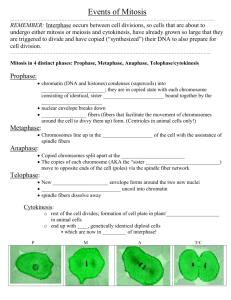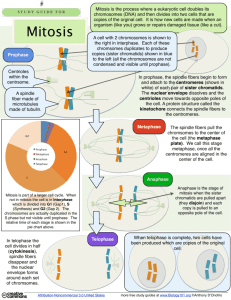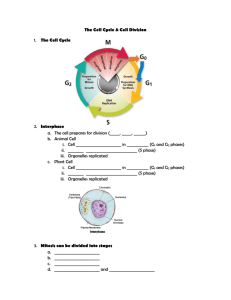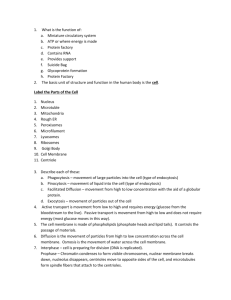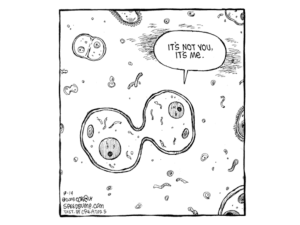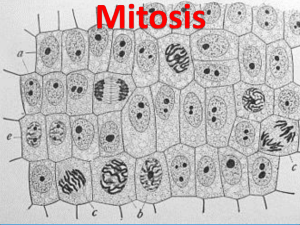Mitosis Worksheet: Cell Division Stages & Labeling
advertisement
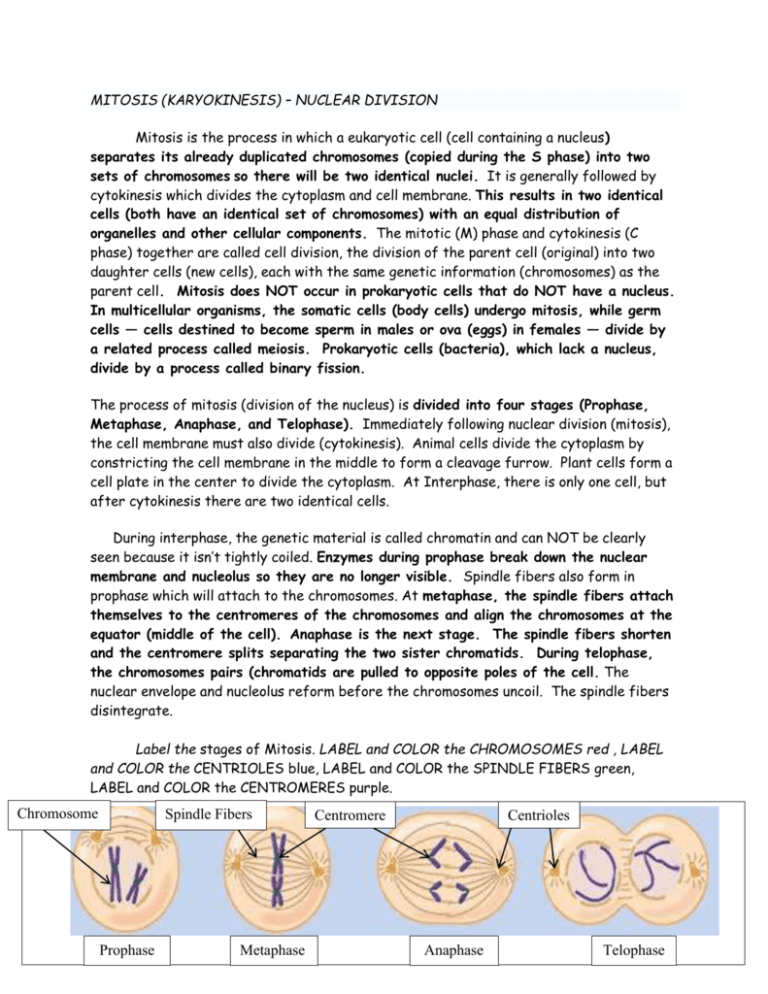
MITOSIS (KARYOKINESIS) – NUCLEAR DIVISION Mitosis is the process in which a eukaryotic cell (cell containing a nucleus) separates its already duplicated chromosomes (copied during the S phase) into two sets of chromosomes so there will be two identical nuclei. It is generally followed by cytokinesis which divides the cytoplasm and cell membrane. This results in two identical cells (both have an identical set of chromosomes) with an equal distribution of organelles and other cellular components. The mitotic (M) phase and cytokinesis (C phase) together are called cell division, the division of the parent cell (original) into two daughter cells (new cells), each with the same genetic information (chromosomes) as the parent cell. Mitosis does NOT occur in prokaryotic cells that do NOT have a nucleus. In multicellular organisms, the somatic cells (body cells) undergo mitosis, while germ cells — cells destined to become sperm in males or ova (eggs) in females — divide by a related process called meiosis. Prokaryotic cells (bacteria), which lack a nucleus, divide by a process called binary fission. The process of mitosis (division of the nucleus) is divided into four stages (Prophase, Metaphase, Anaphase, and Telophase). Immediately following nuclear division (mitosis), the cell membrane must also divide (cytokinesis). Animal cells divide the cytoplasm by constricting the cell membrane in the middle to form a cleavage furrow. Plant cells form a cell plate in the center to divide the cytoplasm. At Interphase, there is only one cell, but after cytokinesis there are two identical cells. During interphase, the genetic material is called chromatin and can NOT be clearly seen because it isn’t tightly coiled. Enzymes during prophase break down the nuclear membrane and nucleolus so they are no longer visible. Spindle fibers also form in prophase which will attach to the chromosomes. At metaphase, the spindle fibers attach themselves to the centromeres of the chromosomes and align the chromosomes at the equator (middle of the cell). Anaphase is the next stage. The spindle fibers shorten and the centromere splits separating the two sister chromatids. During telophase, the chromosomes pairs (chromatids are pulled to opposite poles of the cell. The nuclear envelope and nucleolus reform before the chromosomes uncoil. The spindle fibers disintegrate. Label the stages of Mitosis. LABEL and COLOR the CHROMOSOMES red , LABEL and COLOR the CENTRIOLES blue, LABEL and COLOR the SPINDLE FIBERS green, LABEL and COLOR the CENTROMERES purple. Chromosome s Spindle Fibers Prophase Metaphase Centromere Centrioles Anaphase Telophase
